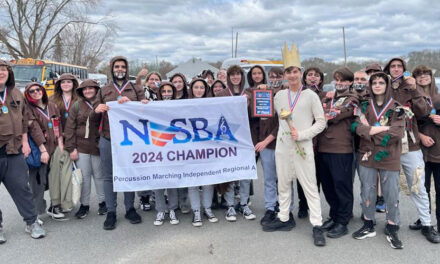Published in the July 21, 2016 edition
By BOB TUROSZ
NORTH READING — The work of tying up loose ends on the high school–middle school project is definitely winding down, but one of the unresolved issues the Secondary Schools Building Committee is still dealing with concerns lights in the east stairwell of the high school academic classrooms.
Alison Carlson, 15 Hill St., has complained about light emanating from the stairwell, which she finds intrusive, and has brought the issue before the SSBC with regularity.
SSBC Chairman invited electrician Scott Ellis who worked on the project when the school was being constructed, for an opinion on what it would entail to rewire the stairwell lights so they can be turned off at night or put on times. Carucci had an estimate from another local electrician, Bob Vardaro, of about $20,000 to do the job, which the SSBC finds prohibitively expensive.
Ellis said there would have to be an intensive investigation of the circuits involved and if the decision is made to proceed with changes, it would all have to be with exposed metal conduits on the walls which would be very expensive.
Carucci said he’s tried to get formal price estimates from other electricians outside of Vardaro and no one is interested in the job. If the lighting controversy continues, Carucci said the SSBC should refer the issue back to the School Committee and let them take responsibility, “because it is a school problem now.”
The idea of “kicking it back to the schools” didn’t fly with SSBC members Janene Imbriano (also a School Committee member) and Sean Delaney and a spirited discussion ensued among the members for the next 20 minutes. Ironically, Mrs. Carlson, who has been a regular face at most SSBC meetings for the past couple of years, was not present.
“Why would it go back to the school if she (Carlson) has been on this since day one?” asked Imbriano.
Delaney agreed the problem shouldn’t be pushed back onto the School Committee, at least at this point. This situation is different from what’s being proposed by an abutter in the back of the project who wants to pay for a fence along the property line out by the tennis courts. That issue was referred back to the school board because the abutters are asking to install the fence on school property because of old growth trees on the land.
Carucci felt the situations were the same, which Imbriano and Delaney disagreed with. “From day one, the abutters out back wanted a fence,” too said Carucci. “It’s the same with the lights. We kicked it back to the School Committee.”
Delaney said the only reason it was referred back to the school board is that the new proposal requires the fence to be on town land, not the abutters, because of the trees. “The decision has to be made here what, if anything, is this committee willing to do,” said Delaney. “I don’t think it should be pushed onto the school department.”
Don Kelliher felt both sides had merit.
“The SSBC needs to decide whether it wants to do anything else. It was built the way it was designed. We have what we bargained for in the lighting. The committee can decide if we want to go spend some money and do something different or not. Then it’s up to the School Committee to do something else. It’s their building, do what you want,” Kelliher said.
Jerry Venezia suggested the topic be put on the SSBC’s agenda for their next meeting to (perhaps) finally decide the issue. At a couple of points in the discussion it was mentioned the school’s building department is not in favor of a battery–powered option to control the lights, but this option may be brought back. SSBC member Dan McInnes suggested they find out why the building department doesn’t want the battery operated wireless controls (which no one had a price for, anyway.)
Architect Brad Dore agreed the hard–wired, metal conduit solution would be expensive and a lot of work. “Why do you want to do that in your stairwell when you don’t have to?”
While the debate raged, Mel Webster walked out into the hallway and counted the lights in the stairwell, saying there are 12 lights that would have to have sensors installed. Each light would have to have a motion sensor installed that says when there are people in the stairwell.
“Get a price on the battery operated, see if the SSBC wants to pay for it, if we reject it, she can go to the School Committee,” said Venezia. “It’s a two–step process.”
“Who’s going to pay for it?” asked Carucci. “Who cares what the price is, we don’t have the money.”
Delaney said it’s necessary to get a price on the battery operated option in order to have an answer for Mrs. Carlson, whether the SSBC wants to proceed or not.
Discussion continued in this vein for quite some time. At the end, the SSBC reached agreement to get a price on the battery operated option in time for their next meeting Aug. 9 when a decision (possibly) could be made…or not.
“We want the opportunity to vote on something but we need to know what it is,” said Kelliher.
Otherwise, the end is near
Dore said his firm is following through on punch list items and noted Gilbane, the main contractor, has requested a certificate of “substantial completion” for the entire project, which he acknowledged. Whatever minor construction items that are still considered open on the punch list will be completed by August 15, said Kevin Nigro of PMA, the project manager.
The goal is to be completely out of there before the start of school in September, he said.
Anyone can see there is no grass growing on the newly constructed lower athletic fields and Carucci conceded that will have to be a fall project. Given this summer’s drought, which was officially acknowledged by the state last week, putting the grass seeding off until the fall may turn out to be a blessing in disguise.




